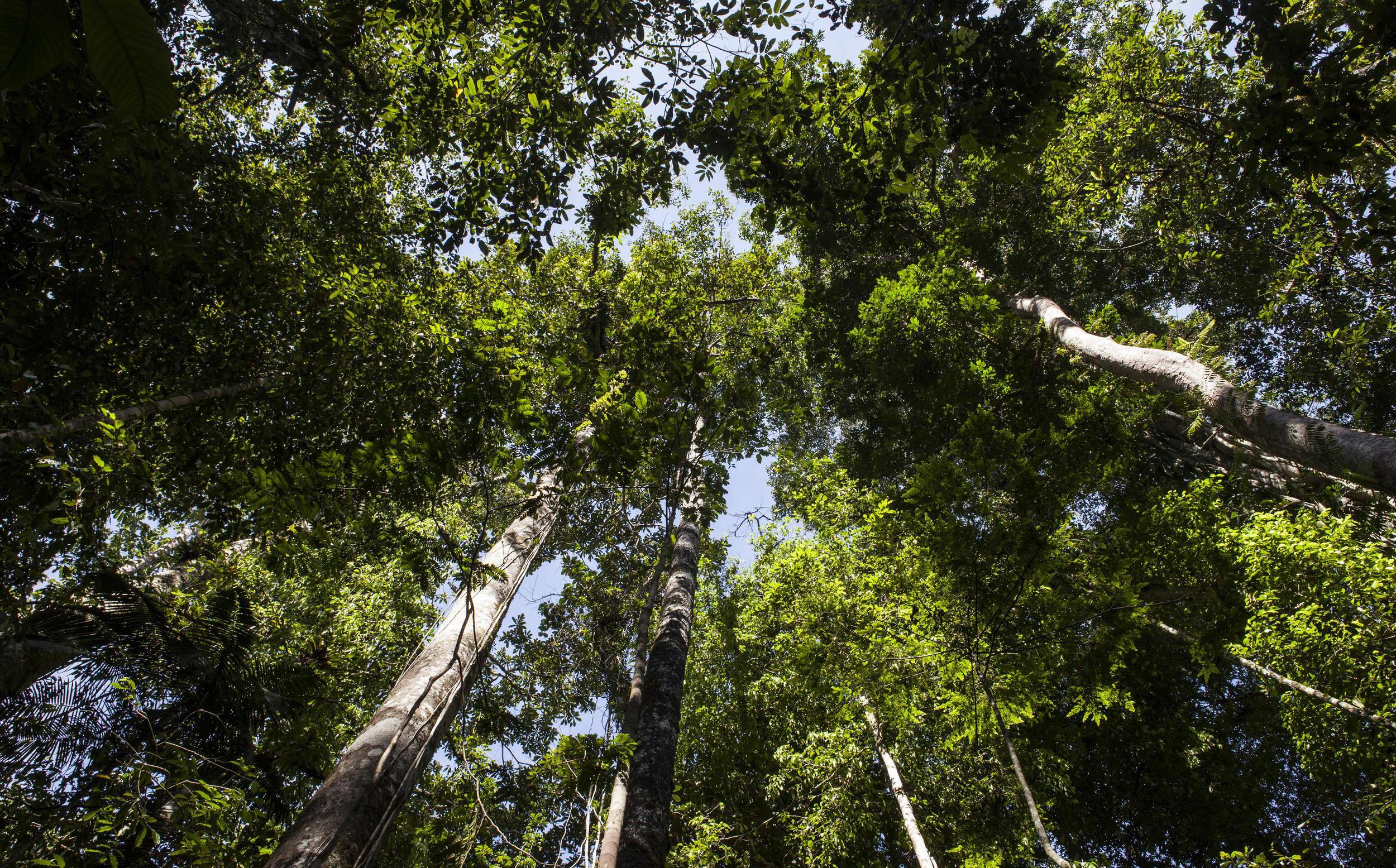
3 minute read
Case Study 7: Jayapura/Sarmi, Musim Mas Group
Issues of potential concern:
• Changes to Forest Moratorium • Abandoned concessions
© Oscar Siagian / Greenpeace
Merbau tree (Intsia spp., also known as Kwila) inside the forest in Kaureh sub-district, Jayapura regency close to the palm oil concessions issued to the Musim Mas group. 12 Mar, 2014.
In 2011, the Musim Mas Group started obtaining permits for four concessions located in remote primary forest in the Mamberamo River basin in Jayapura and Sarmi regencies, in the north of Papua Province, registered to PT Daya Indah Nusantara (PT DIN), PT Wira Antara (PT WA), PT Siringo-Ringo (PT SRR) and PT Megasurya Mas. By late 2014, all four concessions had been released from the forest estate. PT WA and PT DIN were both granted forest release by then Minister Zulkifli Hasan in September 2014, his last month in office.

Land cover map PT Wira Antara and PT Daya Indah Nusantara
The concessions have never been developed and are currently abandoned, because shortly after the last ones were released from the forest estate Musim Mas enacted a sustainability policy in which it committed not to engage in deforestation. In November 2020 all four Musim Mas companies confirmed to Greenpeace Indonesia in writing that they have no plans to develop plantations. In the case of PT Megasurya Mas and PT SRR, they stated that they no longer possess valid permits to do so.
All four concessions are marked on national land cover maps as being primary forest. In the original 2011 Forest Moratorium map, PT DIN’s and PT WA’s concessions were included in the area under moratorium (the other two concessions being excluded because they had obtained their location permits before the moratorium came into force).
However, ministry records of correspondence show that on 21 May 2013, two Musim Mas subsidiaries (PT Intibenua Perkasatama and PT DIN) wrote to the Ministry of Forestry, claiming that their concession land was secondary forest and asking for the concessions to be removed from the moratorium map. The ministry accepted PT DIN’s request and its concession was removed from the moratorium map on its fifth revision in November 2013.404 PT WA then wrote to make a similar request in March 2014,405 and the ministry agreed to make the change on the sixth revision of the moratorium – in fact, however, PT WA’s concession had already been removed along with that of PT DIN, on the fifth revision, for reasons which Greenpeace has been unable to ascertain – though it is possible that the letter from PT Intibenua Perkasatama may have been related to PT WA’s concession.406
It is hard to see how the areas concerned could possibly have been logged or otherwise degraded to such a degree that they were no longer primary forest and therefore warranted removal from the moratorium. Parts of the concessions removed from the map were more than 50 km from the nearest road and a similar distance from the nearest village, and had limited river access. Satellite images show a continuous forest canopy with no roads or cleared areas. As such it is difficult to understand why the concessions might have been removed from the moratorium, other than to accommodate the companies’ interests.
Six years later, the primary forest remains in good condition. The areas to the north, east and south of the concessions are protected forest and there is a large area of peatland immediately to the west. Musim Mas’s plans have long been abandoned. However, the concessions remain outside the forest estate and the Forest Moratorium map, and so could be reallocated to new investors. If a plantation was created here, it would pose a major risk to the entire landscape, as it would be the first major industrial development in the entire Mamberamo River basin, notable as the world’s second-largest ‘unfragmented’ river system.407
404 See http://appgis.menlhk.go.id/appgis/Matrik%20dari%20Pemangku%20Kepentingan%20dan%20Respon%20thdp%20PIPIB5_renaksi.pdf. 405 See http://appgis.menlhk.go.id/appgis/Matrik%20Masukan%20dari%20Pemangku%20dan%20Respon%20terhadap%20PIPPIB%20Revisi%20%20 VII.pdf. 406 PT Intibenua Perkasatama appears in court records (see Supreme Court of the Republic of Indonesia (2011b)) as having had a location permit in Jayapura issued in 2011, but no maps were shown and no further record of other permits has been found under this name. One explanation could be that PT Intibenua Perkasatama’s location permit was reissued or transferred to PT Wira Antara, but Greenpeace has been unable to verify this. 407 Nilsson C et al (2005)







